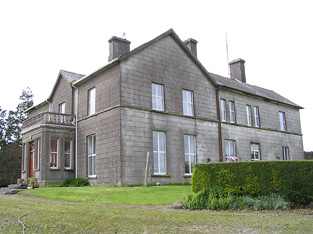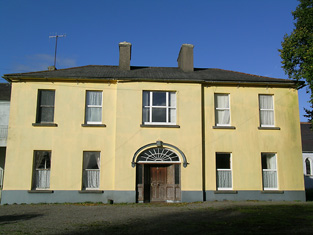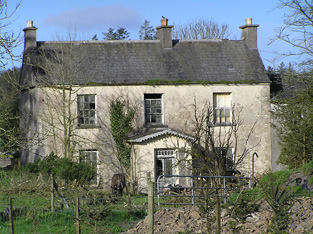Lisnamrock Castle
Houses within 5km of this house
Displaying 10 houses.
Houses within 5km of Lisnamrock Castle
Displaying 10 houses.
| House name | Description | |
|---|---|---|
| Ballyphilip | The seat of the Going family in the 18th and 19th centuries, W. and A. Going were resident in 1814 and Ambrose Going held the property in fee at the time of Griffith's Valuation. The buildings were valued at £30.15 shillings. This house was held by the representatives of B.F. Going in 1906. Buildings are still extant at the site. | |
| Coalbrook | A Langley home in the 18th and 19th centuries. The Ordnance Survey Name Books describe the demesne as "nearly one half wood and oranmental ground" in 1838. It was valued at £35.10 shillings in the mid 19th century when held by Henry Langley in fee. George Langley was the occupier in 1906 when the buildings were valued at £41+. This house is still extant and lived in. |

|
| Lickfinn | Fergus Langley occupied Lickfinn in 1814 and John Langley held the house valued at £12 and 273 acres in fee at the time of Griffith's Valuation. This house was later known as Knockanure. In 1906 held by the representatives of John Langley. | |
| Pastor Ville [Kockboy] | In 1840 the Ordnance Survey Name Books refer to Pastorville as a gentleman's seat and to Micheal Meeghan as the proprietor. At the time of Griffith's Valuation Timothy Meighan held a house at Knockboy valued at £10.15 shillings and 15 acres from Edmund Byrne. This appears to be the house Pastor Ville marked on the first Ordnance Survey map and on the later 25-inch map of the 1890s. Buildings are still located at this site. | |
| Poyntstown | A home of a branch of the Cooke family in the 18th century. In 1786 Wilson refers to "Point's-town" as the seat of William Cooke. He was also the proprietor in 1814. In 1837 Lewis records Poyntstown as the property of Phanuel Cooke "in ruins". The house is marked as in ruins on the first Ordnance Survey map. Fennell Cooke held this townland at the time of Griffith's Valuation. | |
| Glenview | Glenview was occupied by the Reverend Edmund Prendergast in the early 1850s. He held the house valued at £18.15 shillings from Matthew Prendergast. In the early 20th century the house was altered and extended by a religious order who set up a school. |

|
| Wilford | Wilford was the residence Butler Esq in the 1770s and 1780s and of Mr Richard Blackmore in 1814. In the early 1850s it was occupied by John Blackmore, who held the property valued at £11+ from William P. Barker with 128 acres. The house is labelled Wilford House on the 1st edition Ordnance Survey map but as Shangarry House on the 25-inch edition of the 1890s. It is now a ruin. | |
| Slievardagh | In 1906 John H. Lanphier held buildings valued at £18+ in the townland of Blackcommon part of the village of Commons, probably Slievardagh House. This house is not marked on the first edition Ordnance Survey map. |

|
| Coolquill Castle | In 1786 Wilson refers to Coolquill as the seat of Mr. Gahan. The property is labelled "Coolquill Castle" on the 1st edition Ordnance Survey map and indicates that it was built on to a tower house. Coolquill was held in fee by Colonel Palliser in the mid 19th century. He was married to Anne Glenstanes. The castle was valued at £5. The castle ruin and other buildings are still extant at the site. | |
| Venter Fair | The Ordnance Survey Name Books refer to this house in the townland of Clashduff, parish of Ballingarry as "Venture Fair" and note the existence there of coal mines of the same name. At the time of Griffith's Valuation, it was leased by Mrs. Mary O'Sullivan from the Langley estate and valued at almost £10. A house is still extant at the site. |

